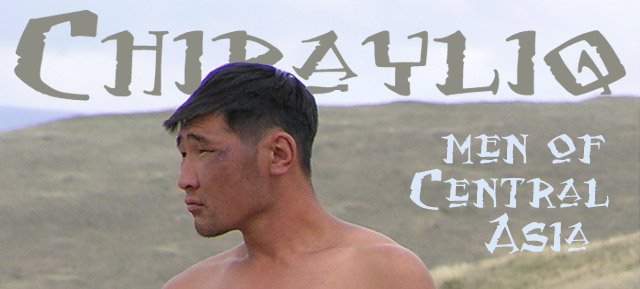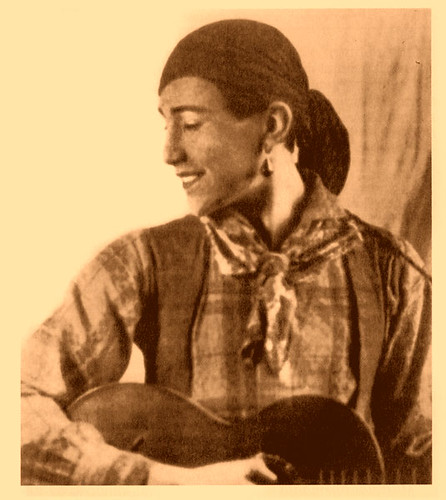Nureyev was the youngest of four children and the only boy. His family were originally poor Tatar peasants, but his father Hamet had seized the opportunity that came with the revolution, and had become a political education officer in the Soviet Army. When he was stationed in Vladivostok, his wife Farida and her daughters travelled to join him. On the train, somewhere near the Baikal lake in March 1938, Rudolf was born.

When war broke out, Farida and the children were evacuated from Moscow to Ufa in the Urals, and that is where Rudolf grew up. With Hamet away at war, times were hard, and the Nureyevs were very poor. When Rudolf started school, the other children laughed at him because he had no shoes and his coat was a hand-me-down from his older sisters. I remember a much watched video tape with Nureyev on the Dame Edna show, where he explained that the scar on his lip came about when he was a child and was so thin that he looked like a bone, so a dog tried to eat him ...
 On New Year’s Eve, 1945, Farida smuggled all her children into a performance of the patriotic ballet Song of the Cranes starring the Leningrad-trained Bashkir ballerina Zaituna Nazretdinova. Rudolf knew at once that he wanted to become a dancer.
On New Year’s Eve, 1945, Farida smuggled all her children into a performance of the patriotic ballet Song of the Cranes starring the Leningrad-trained Bashkir ballerina Zaituna Nazretdinova. Rudolf knew at once that he wanted to become a dancer.He started to take lessons in local folk dances and ballet. When his father returned from the war, he was not at all pleased with his son's "unmanly" interests, but Rudolf had already set his mind to it.
His teachers saw great potential in him, and encouraged him to study in Leningrad. Eventually, while on tour with a local ballet company, Rudolf applied to the Bolshoi ballet company in Moscow and was accepted. But he felt that the Leningrad school would be better (also because it was residential, so he wouldn't have to worry about paying for housing), so instead of returning home to Ufa with his company he headed to Leningrad.

He auditioned at the Leningrad school and was accepted, with the comment "you'll become either a brilliant dancer or a total failure - and most likely a failure". Rudolf was now 17 - a very old age for enrolling at a formal ballet school. He trained extremely hard to catch up, but he also broke school rules and snuck out of the dorms to watch performances at the Kirov ballet. In any case, he obviously did not become a failure.
When he graduated from the school, he was so good that he was offered a soloist contract by both the Kirov and Bolshoi ballets. In the end, and perhaps to no surprise, he chose the Kirov ballet.

He continued to be both brilliant, making his own interpretation of every ballet he danced, and difficult, arguing with choreographers and teachers and walking out on them to train by himself.

Nureyev dancing Le Corsaire with Alla Sizova. From the collection of Sergei Sorokin.

Nureyev with Nadia Nerina. According to the Telegraph, "she impressed and humbled Rudolf Nureyev when he attempted to show off in a performance of Giselle with a series of 16 entrechats six (jumps with rapid changes of feet). Performing Swan Lake a few nights later, with Nureyev watching from the stalls, Nadia Nerina doubled his feat to 32 — an unheard-of achievement for a female dancer — and a furious Nureyev stormed out of the performance."
 When the Kirov company went on tour to Paris in 1961, Nureyev caused a lot of trouble for the political agents running the tour, who were probably under a lot of pressure since he as such a great dancer was such a valuable asset to the Soviet Union. He didn't feel like going straight back to the hotel after the performances, but went out on the town with the French dancers and hung out with the locals.
When the Kirov company went on tour to Paris in 1961, Nureyev caused a lot of trouble for the political agents running the tour, who were probably under a lot of pressure since he as such a great dancer was such a valuable asset to the Soviet Union. He didn't feel like going straight back to the hotel after the performances, but went out on the town with the French dancers and hung out with the locals.The company was supposed to continue its tour to London, but Nureyev was instead handed a ticket back to Moscow and told he had to go perform at a gala back in the USSR. He was told that he would rejoin the Kirov company in London afterwards, but he didn't really believe that, and feared that he would never again be allowed out of the Soviet Union. So Nureyev defected.
Upon his defection he was immediately offered an engagement with the Grand Ballet du Marquis de Cuevas.

Soon Nureyev got to meet the dancer Erik Bruhn. They fell in love, and despite a very stormy relationship they remained close until Bruhn's death. Bruhn and Nureyev shared the idea that a male dancer should be allowed to dance just as expressively as a woman, and their style of male dancing would later be taken up by other choreographers.
In 1961 Nureyev also made his first performance in Britain, at a ballet matinée organised by the Royal Ballet's Prima Ballerina Dame Margot Fonteyn. He was offered to join the Royal Ballet, and his first performance with the company was partnering Margot Fonteyn in Giselle.
Thus began a lasting partnership and friendship between the two.

Nureyev was a quick learner, and amassed an unusually large and varied repertoire. He danced the old classics in many different variations, and took well over a hundred roles by more than forty choreographers. Many of these roles were created especially for him. His own takes on the classics also led him to make his own productions.
He appeared in cinema, as well, among his roles a racy portrayal of Rudolph Valentino. He also made memorable appearances in the Muppet Show, dancing Swine Lake and being harrassed by Miss Piggy in the sauna ...

Nureyev became ballet director of the Paris Opera in 1983, and brought new life to the Paris Opera by dramatically widening the repertoire, and encouraging the dancers to experience many styles, just like he had.

His love for music led him to conducting, which he could continue with even as his body was wrecked from dancing and his health deteriorated with AIDS.
 In March 1992, Rudolf Nureyev, living with advanced AIDS, visited Kazan and appeared as a conductor in front of the audience at Musa Cälil Tatar Academic Opera and Ballet Theater in Kazan. The theater now annually organizes the Rudolf Nureyev Festival in Tatarstan.
In March 1992, Rudolf Nureyev, living with advanced AIDS, visited Kazan and appeared as a conductor in front of the audience at Musa Cälil Tatar Academic Opera and Ballet Theater in Kazan. The theater now annually organizes the Rudolf Nureyev Festival in Tatarstan.Nureyev's last ballet appearance was in 1992, a production of La Bayadère at the Palais Garnier. The French Culture Minister, Jack Lang, presented him with France's highest cultural award, the Commandeur de l'Ordre des Arts et des Lettres. Nureyev died in Paris a few months later, at the age of 54.
...
 On the Nureyev Wikipedia entry's discussion page someone cites a slightly dubious source with a broken link. In a Russian E-book called The most famous artists of Russia it supposedly says:
On the Nureyev Wikipedia entry's discussion page someone cites a slightly dubious source with a broken link. In a Russian E-book called The most famous artists of Russia it supposedly says:“Nureyev, who made Russian ballet famous, was not Russian. [...] Unlike many artists or scientists of those times Rudolf didn’t keep his origin a secret."
Apparently he adopted Russian stereotypes about Tatars to his own enjoyment, because the quote continues: "He was proud of his ethnicity and he really resembled an impetuous and self-willed descendant of Genghis-Khan, as people tended to call him. His ballet-school mates say that on occasions he would emphasise that his ancestors ruled Russians during 300 years.”
P.S. Mum has a huge photo book about Nureyev, so we can expect more of him later ...
-------------------
Note: The photos with no captions have been gathered from various random online fangirl collections.












